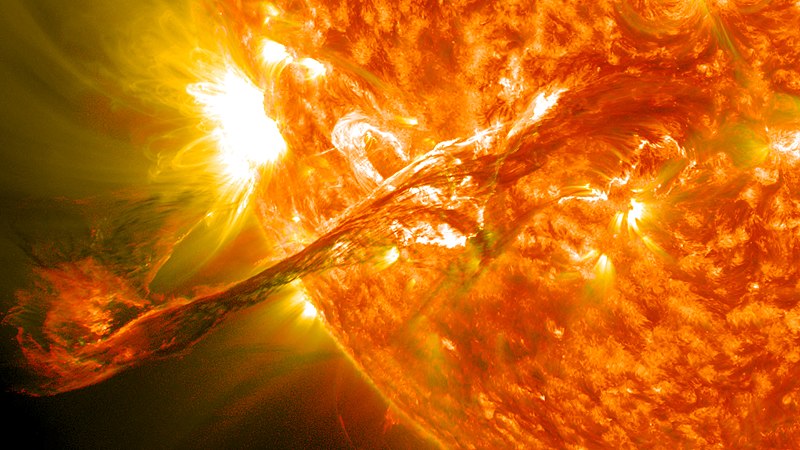
A May 2024 coronal mass ejection caused one of the strongest geomagnetic storms ever observed by NASA’s SABER instrument, according to new Geophysical Research Letters research. Credit: Wikimedia Commons/ NASA
Featured Research
May 2024 geomagnetic storm was one of the strongest since 2002
A coronal mass ejection, or a large explosion of plasma from the Sun, hit Earth’s high atmosphere between May 10-13, 2024. The subsequent geomagnetic storm was one of the strongest observed in the last 22 years, causing infrared radiation levels to increase by almost tenfold globally. [Geophysical Research Letters research]
Reservoir modifications could help fish flow
Dams and reservoirs can disrupt fish migration paths along natural rivers and streams. New research modeled how modifying reservoir releases at the Danjiangkou Reservoir in central China could improve migration for four economically valuable carp species. [Water Resources Research research]
El Niño kickstarts many heatwaves in India
Heatwaves in India impact human health and agriculture and are strongly influenced by El Niño events. New research suggests that most pre-monsoon Indian heatwaves begin in the country’s northwest region, and then move toward the country’s northeast and southeast regions. While southward-moving heatwaves are often influenced by El Niño, central and northern heatwaves can be more intense due to local meteorology. [Geophysical Research Letters research]
Sediment measurements improve Tibetan Plateau water estimates
Water stored on the Tibetan Plateau supports 2 billion people downstream and is declining due to climate change. New research quantifying sediment transport in the region finds that satellite estimates have overestimated the Tibetan Plateau’s terrestrial water decline by approximately 10%. [Geophysical Research Letters research]
In rare opportunity, researchers observe formation of Icelandic valleys
During the lead-up to recent volcanic eruptions near the city of Grindavík, scientists documented graben formation in real time. [Eos research spotlight] [Geophysical Research Letters research][field photos]
###